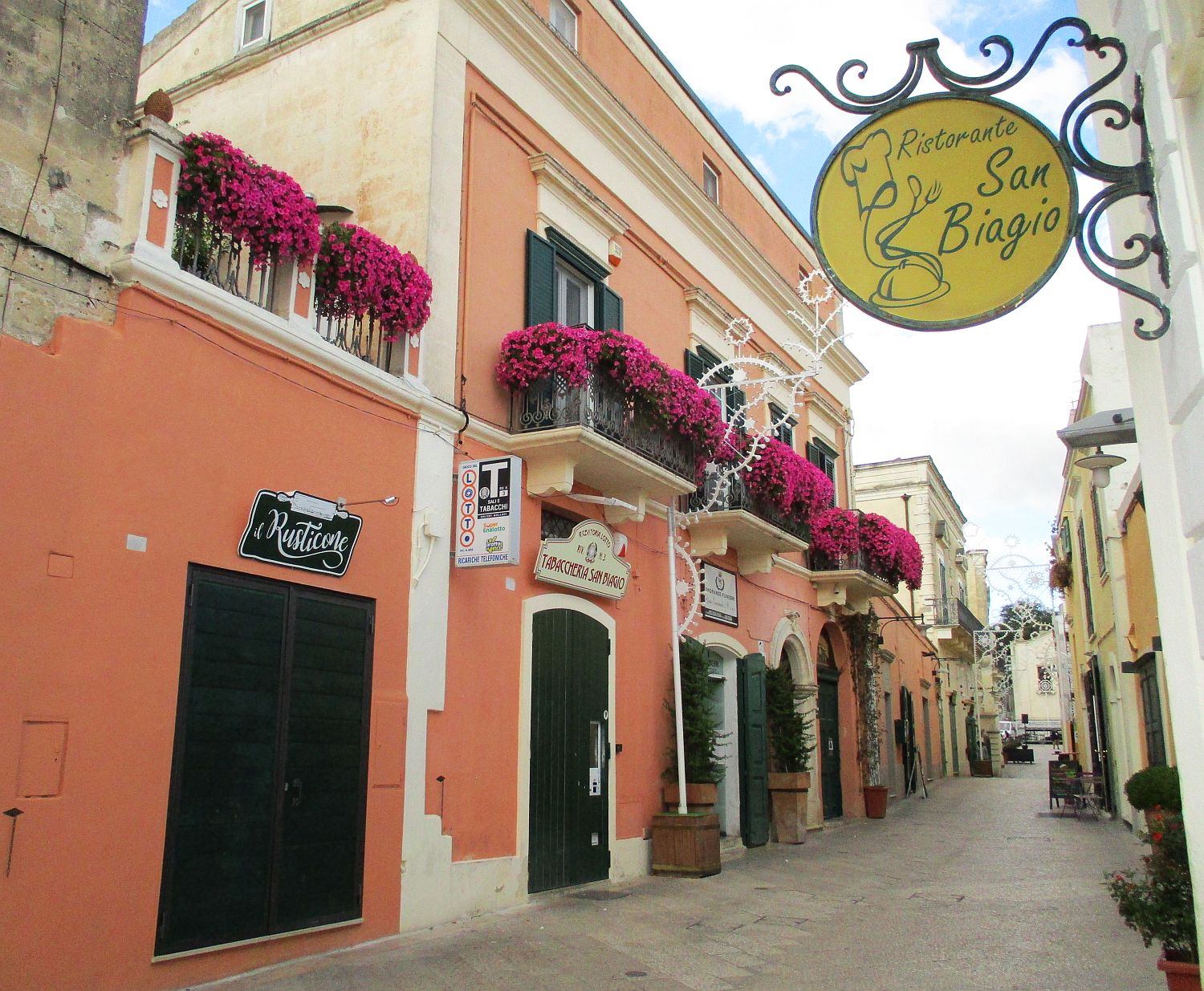Matera, probably the most spectacular city of Italy, looks great covered in the autumn sunlight and is located in a remote corner of southern part, in the small Basilicata region.
We arrived here after a 2-hour train ride from Bari (4.90 euro a ticket) and from the train station walked through the modern city of Baroque churches and elegant, colorful houses. The first glimpse of the Sassi is breathtaking, looking down at the dramatic tangle of grey stone houses, a total contrast with the new town. Walking down through a vaulted corridor to a steep staircase we plunged into a magical world that doesn’t feel real.













Thick, dark grey clouds were covering the sky, after the early morning rain, and the sunlight was quite dramatic, revealing an ancient city gently touched by filtered, golden rays. It was a mid-September silent morning and, going on the narrow, cobbled, old streets, I felt the deepest sensation of calm and inner peace ever. The shiny, big stones are like pieces of a giant puzzle, making multi-layered houses where roofs become streets for the next level and the optical illusion is overwhelming, because the buildings seem painted, everything seems two-dimensional and you feel as you are entering a painting and walk inside it.





















Matera, Basilicata’s jewel, may be the third-longest continuously inhabited human settlement in the world. Natural caves in the limestone attracted the first inhabitants 7000 years ago and since then, more elaborate structures were built atop them. Today, looking across the gorge to Matera’s huddled Sassi (cave dwellings) it seems you’ve been transported back to the ancient Holy Land. Indeed, the ‘Città Sotterranea’ (Underground City) has often been used for biblical scenes in films and TV.
Considered one of Italy’s most deprived cities, Matera is now an Airbnb hotspot and set to be European capital of culture in 2019. The government encouraged the Sassi’s revival by subsidising restoration work. Artisans moved in, setting up workshops, while bars, restaurants and boutique hotels started to spring up. Most of the caves are now homes, hotels, restaurants and bars, but on the edge of town in Sasso Caveoso you can wander through uninhabited caves and get a sense of what it was like to live here hundreds of years ago. It’s a rawer side of town and incredibly fascinating. The UNESCO designation in 1993 and the filming there of The Passion of the Christ, starring Mel Gibson in 2004, helped to put Matera on the map and boost tourism.



We stopped for lunch at ristorante Nadi, for delicious traditionally homemade pasta with lot of parmigiana and excellent wine, while relaxing with a fairy-tale surrounding view and discrete conversation of a lovely retired French couple sitting at the table near to us.














Matera in one word? Fascinating!
Photo credits: personal archive Ruxandra Chiurtu